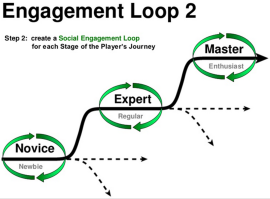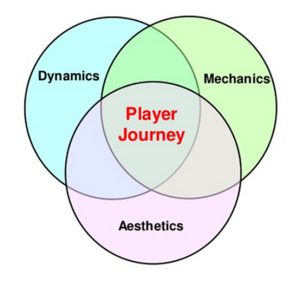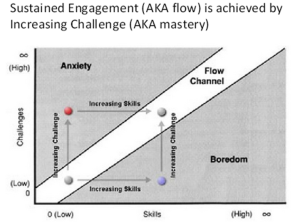Is it a thing? Francisco Dao talks addresses the topic in his weekly column in the PandoDaily about the capture of the Boston terrorists :
“If anything teachable came out of the tragic and frightening events in Boston last week, it’s that the powers of the Internet failed in every way. The FBI, the police, the national guard, the fire department, and every other first responder who worked to keep the people of Boston safe and ultimately kill and capture the marathon bombers were part of the government that the tech industry loves to vilify.”
Now, let’s remember that the distinction between a game of collaboration and a game of competition… the internet is not against the government, its just trying to collaborate. Is enough just to think about the quantity of offline perpetrators that have been caught by collaboration with both sides (an example here). If anything, the disorganized mass of the internet is trying to make its way as an entity to be respected.
I highlight disorganized because that’s what Dao’s really talking about. Can anyone really expect from a forum in reddit (history of reddit here) some meaningful social collaboration? Reddit is too permeable to lies, inventions and amplifies mistakes because the social mechanism of interaction between users is based on chained discussions that tend to focus on the latest entries and live from the momentum users put into it, i.e.: short, chained statements. Kind of like speculative strategies in the stock market, it reminded me of this cartoon :

But despite the focus of reddit not being on the content of information but on the agility that it is passed, there’s a learning curve for the community on how to best use the platform. To test it, I launched a reddit post saying reddit “sucked at dealing at dealing with the Boston suspect identifications” only to 1min later having a comment saying “We get it. Can everyone and their mothers stop trying to say the same thing over and over?”. It helps to build the case for automoderation, the other comments too. Redditors are not bound to be unfruitful, just, sometimes, the answer is not in the public domain.
Gail Gardner puts it in an arcticle from last year on directory journal :
“Redditors are NOT blogger fans and most of us are fortunate if we aren’t already banned there!”
Bloggers focus on contents while redditors focus on the chain. They are not there to hear, they are there to be heard. Reddit is about agility and speed in transacting information spread on the web social circles. Their users are not concerned with one individual point, they are trying to build a social perspective. Look at how Gardner describes the anatomy of a reddit article :
“WHAT CONTENT WORKS BEST ON REDDIT?
Remember that Gregory Chiotti said, ‘Redditors are looking for (something that is insanely informative or entertaining)’? BUT – and this is a BIG BUT – consider the audience there.
Your ‘insanely informative’ entertaining content needs to be 30 seconds long and appropriate for people who think like tweenage boys stuck in puberty – or raunchy, violent or perverted if you can swing that way.
Unless you become accepted in an intellectual Sub-Reddit of people who agree with you, your content will need to appeal to the masses – the lowest common denominator. You could start your own, but if you want to drive traffic you have to be where the RedditGators are.
Short works best even with intelligent people, as this further advice from maxwellhill explains:
‘Substantiate a good post with one or at most 2 decent references and then surround these with you own narrative of choice. A video might help but only 1. Redditors can’t comment on the main topic if there so many referenced articles in the blog that it switches people off (for me at least). IMHO generally more is less.’
In other words, a really short post featuring a 30 second animated cartoon video and a cartoon image of the RedditGator would have a much better chance of getting to the first page of Reddit than a comprehensive post like this one.”
So the focus here is not on the content, but on the transaction of information much like a social web crawler. Reddit’s communication style reflects that by being frontal, direct and concise.
Going back to Dao’s post and his main point :
“My point isn’t to paint the government as perfect, far from it. I get as frustrated by government incompetence and I hate paying taxes as much as anyone. But I’m not so self important to think that I, the Internet, social media, Reddit, the tech industry, and even Anonymous, can solve all of our problems if the government just gets out of our way.”
I get it, sometimes it is frustrating having to accommodate the presumption of a mass attitude that is still in formation, but it’s just a communication problem. But I don’t really believe that internet users are really anarchists defending that they do better than the government. On the opposite, I think they just want to collaborate, and I even believe they can at least compete with engine search of information that is publicly available.
I don’t really see a problem in having forums of people talking a lot of bullshit to try to find one relevant piece of information, it’s not like it’s harmful and despite some possible problems like the spread of information on police activities, it’s not new this problem, normal media coverage already launched this topic and I’m afraid it’s on the side of the government to deal with it. If anything, I think that police forces and other government forces can become more socially integrated and try to manage from within these flows of information.
As for the arrogance, I agree it can be moderated, but it merely reflects the will of the online community to have its skills recognized in the world offline. As a web enthusiast and admirer of the socialnomics revolution I would say it’s a legitimate claim.










